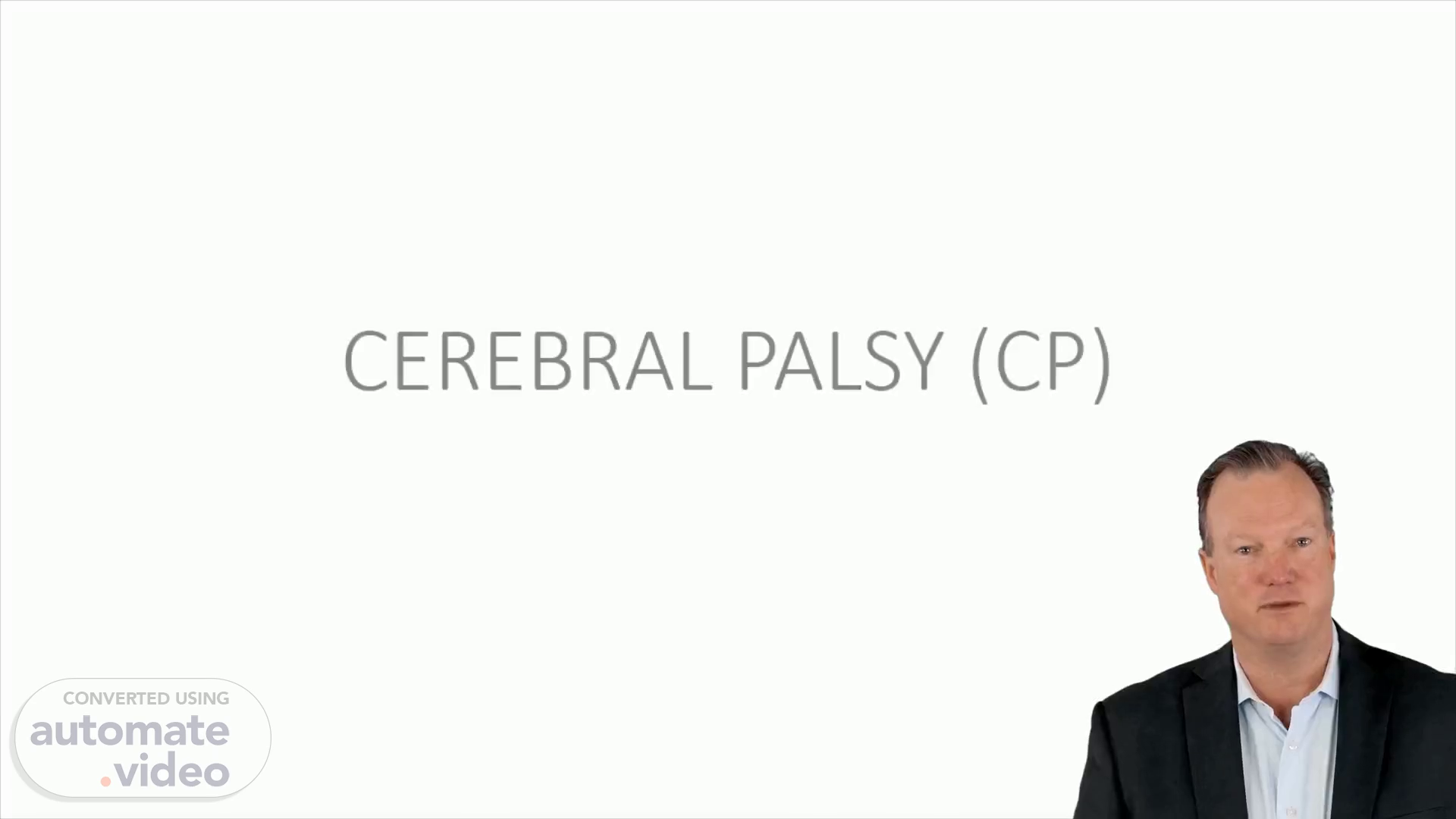Page 1 (0s)
. [Virtual Presenter] Good morning everyone. Today we are here to discuss Cerebral Palsy. I will be taking you through the definition, risk factors, pathology, and classification of Cerebral Palsy. Dr. Raj Kumar Yadav has kindly taken the time to share his insights on the topic. Let us begin..
Page 2 (21s)
. [Virtual Presenter] Cerebral Palsy, or CP, is a clinical syndrome that manifests in motor dysfunction, non-progressive brain damage, and affects an immature developing brain. This damage can lead to a range of impairments, such as vision, communication, cognition, and seizures that may occur during prenatal, delivery, and postnatal periods. CP is a complex condition that requires thoughtful diagnosis and treatment. Each case will bring its own unique challenges for which careful consideration must be given..
Page 3 (55s)
[Audio] Turning to the risk factors of preterm delivery and low birth weight, TORCH infection, third trimester bleeding, preeclampsia, and twin/multiple pregnancies could contribute to the non-progressive disturbances of the development of movement and posture seen in cerebral palsy..
Page 4 (1m 11s)
[Audio] Preterm births below 36 weeks and those with a low birth weight below 2000gms are among the risk factors associated with Cerebral Palsy in the prenatal period. Infection due to the TORCH bacteria, bleeding at the third trimester of pregnancy, preeclamsic toxaemia and multiple pregnancies are also included..
Page 5 (1m 32s)
[Audio] CP is a neurological disorder causing impaired motor function, commonly caused by a placental membrane rupturing before birth, leaving the baby vulnerable to infection. Abnormal presentations such as breech, as well as severe hypoxia and bradycardia, can also contribute to the condition..
Page 6 (1m 51s)
[Audio] Cerebral palsy, or CP, is a neurological disorder caused by brain damage that impacts normal development of a child’s muscle movement, leading to long-term physical disabilities. Post-natal involvement of CP can be attributed to encephalitis, hypoxia, seizures, bleeding disorders, jaundice, and traumatic brain injury. Labeling a child as having CP due to post-natal involvement is generally done between the ages of three and five years..
Page 7 (2m 21s)
[Audio] Cerebral Palsy is a neurological disorder that affects body movements and muscle coordination. It is caused by damage to the developing brain and can lead to a range of pathologies. These include encephalocele, where a part of the brain is not developed, as well as microcephaly or macrocephaly, which are abnormalities in head size. It can also lead to lissencephaly, where there are no brain gyri, or polymicrogyria, where there are too many. Additionally, there can be agenesis of the cortex, intraventricular haemorrhage, and cyst formations in the cortex, all of which can affect a normal brain structure..
Page 8 (3m 1s)
CLASSIFIACTION. based on tone changes - 1. SPASTIC TYPE (75 %)— signs of upper motor neuron involvement Hyperreflexia , Clonus, Extensor Babinski response (abnormal at > 2 years) Persistent primitive reflexes 2. HYPOTONIC TYPE — Deep tendon reflexes are weak unable to maintain the posture show hyper mobility sometimes ..
Page 9 (3m 16s)
[Audio] Cerebral palsy is a neurological disorder that affects movement and body posture. The most common type of CP is dyskinetic, involving the extra pyramidal system, abnormal regulation of tone, and defects in postural control. Movements associated with this type of CP include Athetoid, Chorea, Choreoathetoid, Dystonia, and Ataxia. Athetoid involves slow writhing movements in the distal extremities, while Chorea is characterized by abrupt and irregular jerky movements in the head, neck, and extremities. Choreoathetoid is a combination of these two, and Dystonia features slow rhythmic movements with tone changes that usually affect the trunk and extremities. Ataxia presents uncoordinated and unsteady movements commonly accompanied by nystagmus and dysmetria..
Page 10 (4m 10s)
[Audio] Mixed type cerebral palsy is a combination of spastic and dyskinetic classifications, such as spastic athetoid having a predominant dyskinetic movement pattern with an underlying component of spasticity. This should be taken into consideration when treating patients with cerebral palsy. Appreciated your time..
